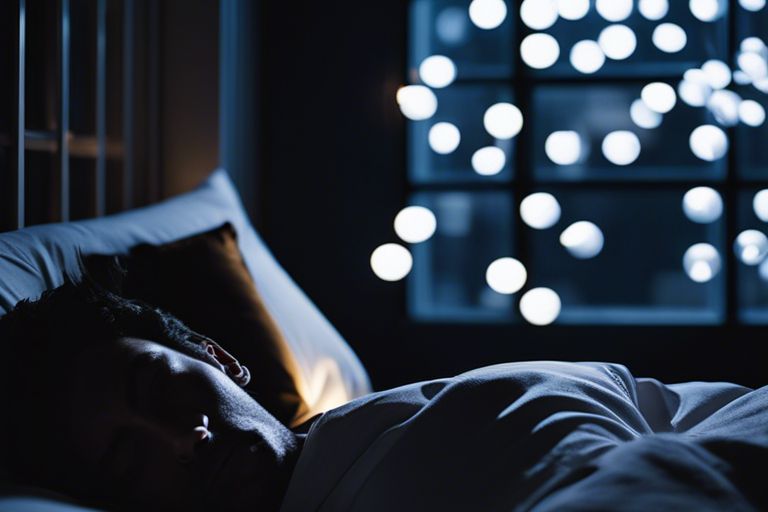There’s a rare sleep disorder that affects some individuals called somniloquy, commonly known as sleep talking. It is a parasomnia characterized by talking during sleep without the person’s awareness. In this blog post, we will investigate into the causes, symptoms, and potential treatments for somniloquy to provide a better understanding of this intriguing sleep disorder.
Key Takeaways:
- Somniloquy is a sleep disorder where a person talks during their sleep.
- It is also known as sleep talking and can range from simple sounds to full sentences.
- Somniloquy is more common in children but can also occur in adults.
- The exact cause of somniloquy is unknown, but it can be triggered by stress, sleep deprivation, or other sleep disorders.
- Most cases of somniloquy are harmless and do not require treatment.
- If somniloquy is disruptive or causing distress, it is advisable to consult a healthcare professional for evaluation and treatment options.
- Improving sleep hygiene and reducing stress levels can help in managing somniloquy symptoms.
The Basics of Sleep Talk
Even though sleep talking is a common sleep behavior, for some, it can escalate into a more frequent and disruptive pattern known as somniloquy. Understanding this rare sleep disorder is important for those who may be affected by it or know someone who is.
Definition and Symptoms of Somniloquy
For those experiencing somniloquy, also known as sleep talking disorder, talking during sleep occurs frequently and can range from simple sounds to full sentences. This phenomenon usually happens during non-REM (rapid eye movement) sleep stages and can occur at any age.
Symptoms of somniloquy can include loud or quiet talking during sleep, mumbling, and in some cases, screaming. While the individual may not remember the episodes of sleep talking, it can disrupt the sleep of their bed partner or other household members.
How Somniloquy Differs from Other Sleep Disorders
Definition: Somniloquy stands apart from other sleep disorders such as sleepwalking, night terrors, and sleep apnea in that it mainly involves vocalizations during sleep without the individual being aware of it. Unlike sleepwalking where physical movement occurs, or night terrors which involve intense fear and agitation, somniloquy revolves around verbal outbursts.
From a diagnostic standpoint, somniloquy is classified as a parasomnia, a category of sleep disorders that involve abnormal movements, behaviors, emotions, perceptions, and dreams during sleep. Understanding the unique characteristics of somniloquy can help differentiate it from other sleep-related conditions and guide treatment strategies.
Causes and Triggers
Obviously, understanding the causes and triggers of somniloquy is essential in effectively managing this rare sleep disorder. Various factors, both internal and external, can contribute to someone experiencing somniloquy episodes.
Genetic and Psychological Factors
Causes of somniloquy can be rooted in genetic predispositions or psychological factors. Studies have shown that individuals with a family history of sleep disorders may be more prone to somniloquy. Additionally, psychological stress, anxiety, or unresolved emotions can also play a role in triggering episodes of sleep talking.
- Genetic predispositions
- Family history of sleep disorders
- Psychological stress or anxiety
Any combination of these factors can contribute to the onset of somniloquy in individuals.
Environmental and Lifestyle Influences
The environment in which an individual sleeps and their lifestyle choices can also impact the likelihood of experiencing somniloquy. Factors such as noise levels, room temperature, or irregular sleep patterns can disrupt the sleep cycle and lead to episodes of sleep talking.
It is important to create a sleep-conducive environment and establish healthy sleep habits to potentially reduce the frequency of somniloquy episodes. This may involve minimizing noise distractions, maintaining a comfortable room temperature, and adhering to a consistent sleep schedule.
Impact and Management
Effects on Sleep Quality and Health
Quality sleep is essential for overall health and well-being, but somniloquy can significantly impact the quality of sleep. Talking in your sleep can disrupt the sleep cycle, leading to fragmented sleep patterns and decreased overall sleep efficiency. This can result in daytime sleepiness, difficulty concentrating, and increased irritability.
Furthermore, chronic sleep talking can also have implications for physical health. Prolonged sleep disruption can contribute to increased stress levels, weakened immune function, and an increased risk of developing other sleep disorders such as insomnia or sleep apnea.
Strategies for Managing and Minimizing Episodes
Minimizing episodes of somniloquy can involve implementing healthy sleep habits and creating a conducive sleep environment. Establishing a regular sleep schedule, practicing relaxation techniques before bed, and ensuring a comfortable sleep setting can help reduce the frequency of sleep talking episodes.
Additionally, avoiding stimulants like caffeine and alcohol close to bedtime, and addressing any underlying stress or anxiety through therapy or counseling, can also play a role in managing sleep talking episodes.
Episodes: In some cases, seeking the guidance of a sleep specialist or healthcare provider may be necessary to explore further treatment options or address any underlying sleep disorders contributing to somniloquy.
Diagnosis and Treatment
Identifying Somniloquy in Patients
The diagnosis of somniloquy, or sleep talking, can be challenging due to the nature of the disorder. Patients may not be aware of their symptoms, and it is often reported by partners or family members who witness the speech during sleep. A healthcare provider will typically conduct a thorough evaluation, which may include a physical exam, sleep study, and detailed medical history to rule out other sleep disorders.
During a sleep study, the patient’s sleep patterns, brain activity, and movements will be monitored to confirm the presence of somniloquy. Additionally, keeping a sleep diary to track the frequency and intensity of episodes can provide valuable information for diagnosis and treatment planning.
Available Treatments and Therapies
Treatments for somniloquy focus on improving sleep quality and addressing any underlying conditions that may contribute to the disorder. In many cases, making lifestyle changes such as practicing good sleep hygiene, managing stress, and maintaining a regular sleep schedule can help reduce symptoms of sleep talking.
For individuals with severe or disruptive somniloquy, cognitive behavioral therapy (CBT) or medications may be recommended. CBT can help identify and address any psychological factors that may be worsening the sleep disorder, while medications such as benzodiazepines may be prescribed for short-term relief in certain cases.
Any treatment plan for somniloquy should be tailored to the individual’s specific needs and may involve a combination of lifestyle modifications, therapy, and medication. It is important for patients to work closely with healthcare providers to find the most effective and sustainable approach to managing sleep talking and improving overall sleep quality.

Final Words
From above, it is clear that somniloquy, also known as sleep talking, is a rare sleep disorder that can happen to anyone but is more common in children and young adults. While it may seem harmless, somniloquy can sometimes be a symptom of an underlying sleep disorder or other health conditions. Understanding the causes, symptoms, and potential treatments for somniloquy is essential in managing this sleep disorder effectively. If you or a loved one is experiencing disruptive sleep talking episodes, it is important to consult a healthcare professional for proper diagnosis and support. By raising awareness and educating ourselves about somniloquy, we can work towards creating a better understanding and providing necessary care for those affected by this unique sleep disorder.
FAQ
Q: What is somniloquy?
A: Somniloquy is a sleep disorder characterized by talking during sleep. It is also known as sleep talking, and it can occur during any stage of sleep.
Q: What causes somniloquy?
A: The exact cause of somniloquy is not fully understood, but it can be triggered by stress, fever, sleep deprivation, alcohol, or other sleep disorders such as sleep apnea.
Q: Is somniloquy harmful?
A: Somniloquy is generally not harmful, but it can be disruptive to the sleep of both the person talking and their partner. In some cases, it may be a sign of an underlying sleep disorder that requires treatment.
Q: How is somniloquy diagnosed?
A: Somniloquy is typically diagnosed based on reported symptoms and a review of the person’s medical history. In some cases, a sleep study may be recommended to monitor the person’s sleep patterns.
Q: Can somniloquy be treated?
A: Treatment for somniloquy may not always be necessary, especially if it is not causing any problems. However, stress management techniques, improving sleep hygiene, and treating any underlying sleep disorders may help reduce episodes of somniloquy.



